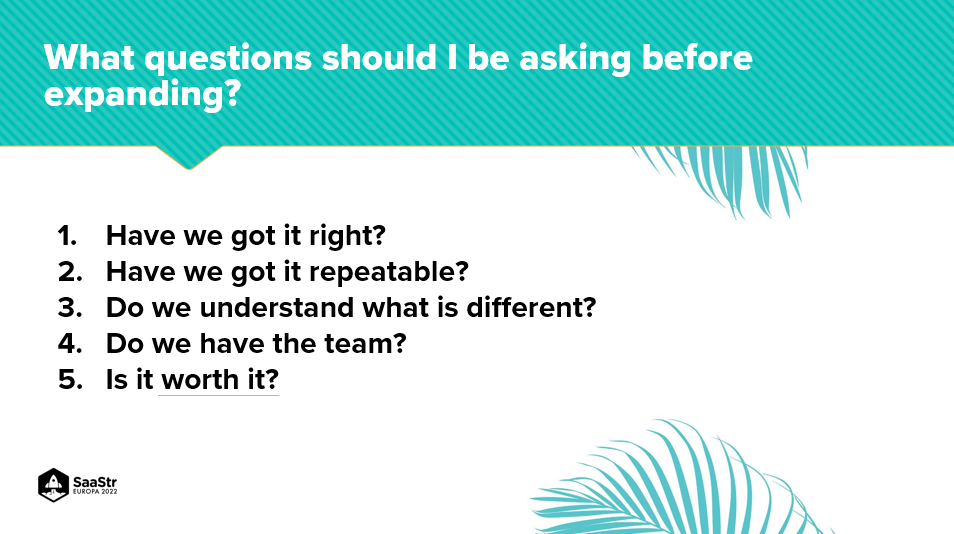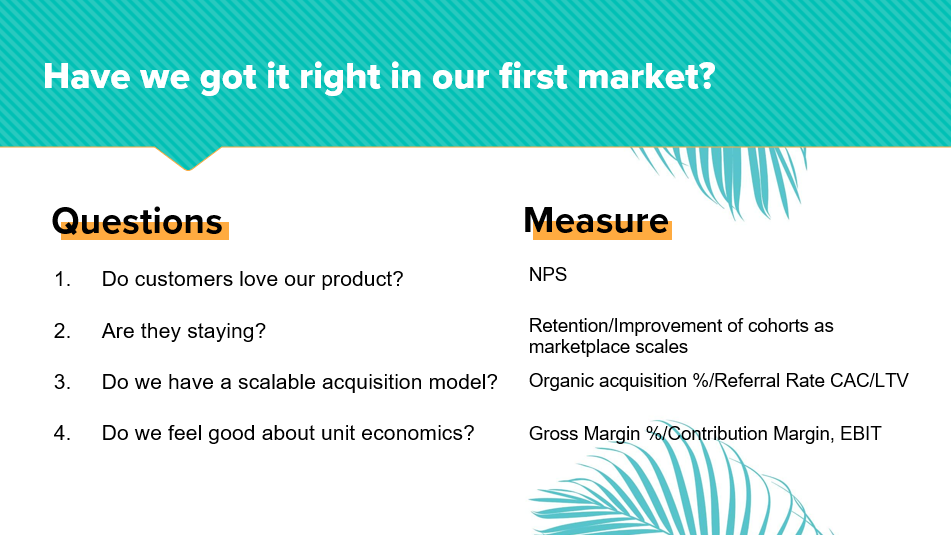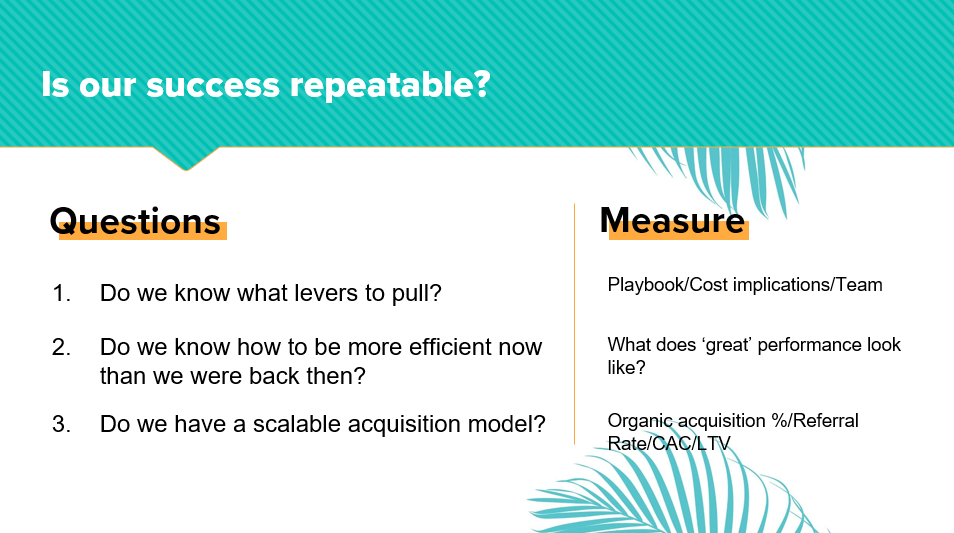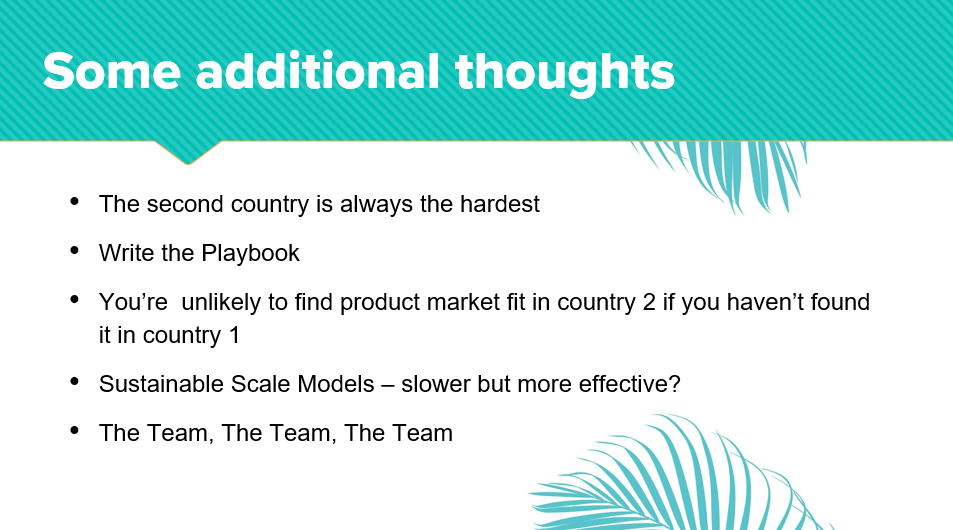After finding success in their home country, many SaaS founders begin to think globally, considering expansion into the international markets. However, global growth is challenging, and it takes the right strategy, preparation, and business model to achieve it.
In an eye-opening session at SaaStr Europa 2022, Harry Briggs (Managing Partner at OMERS Ventures) shares advice for determining whether expansion is right for your business and how to execute it effectively.
Consider why you have thought of expansion. Is it a natural next step for your business, or are you simply getting swept up in momentum? Briggs elaborates, “I think the question you should be asking when you’re thinking about going international is are you expanding to escape your problems? Or do you actually have something worth scaling?”
Briggs goes on to describe some basic questions to ask yourself if you’re thinking about starting up in other countries.
Do you have it right in your first market?
Before pursuing the market in another country, you must ensure optimal success in your current market. This doesn’t simply mean that you’ve had a lot of sales, but instead that you’ve won over lots of repeat customers and have demonstrated a strategy that works.
Obviously, customers in your home market should love the product, but you also need to stay updated on your retention rates and NPS to ensure they are staying with your company. You’ll also need a scalable acquisition model with a proven track record, and you must solidify your unit economics. Data and trackable metrics are critical to understanding your success.
Briggs shared that he had to learn this the hard way years ago when he was the co-founder of a healthy beverage company he co-founded years ago called Firefly. They knew their customers were happy, but they lacked the data to understand key insights. “It’s easy to convince yourself [that] it’s great, we’re growing, everything’s good. But actually, you still might not have a scalable acquisition model because you might just be growing the customers you already have.”

Is your success repeatable?
Before going international, it’s vital to put together a fully formed playbook that empowers you to pull growth levers. These proven and repeatable levers must translate into your own country’s market and beyond. You’ll need to take stock of your team, cost implications, and a fully developed growth strategy.

Do you understand what’s different?
Different countries will have varying laws, regulations, and consumer preferences. So before launching in another market, you must get up to speed on these differences and consider whether you’re ready to operate under them.
For example, Briggs shared some hurdles that Firefly went through years ago as they branched out into newer markets. Firstly, each country’s labels and languages needed to be updated; some countries banned certain ingredients that Firefly used in their original beverage, product development slowed down, and the international expansion took focus away from their scalable, repeatable model.

Do you have the right team?
The talent you hire can make or break your business, particularly when you move to another country’s market. Therefore, you need teams both centrally and locally to drive a successful expansion, and your overall org structure must be thought through carefully.

Is it worth it?
Why are you expanding in the first place? What is the upside to your international growth? Could you reach a large, sustainable TAM within your own market without the headache of expansion? Briggs emphasizes, “There are alternatives [to going international]. You can go deeper in your home market; you can go vertically versus horizontally.”
If you decide that global growth is the right move for your business, then think about your expansion model, the role that capital investment might play, costs, the areas where you will have a structural advantage, the regulatory climate, and your competition. As long as you create a data-backed playbook with a repeatable, scalable model, you should be able to grow your company worldwide.

Key Takeaways
- The second country is usually the hardest. Be prepared!
- Write the international playbook, and follow it.
- You are unlikely to find PMF in country two if you haven’t seen it in country one.
- Build sustainable scale models.
- Hire a team that can help your company achieve success internationally.

